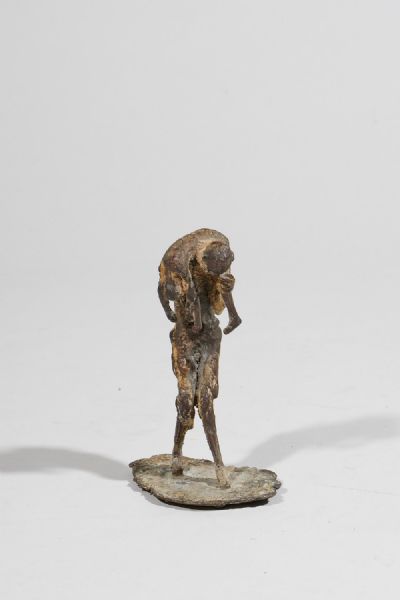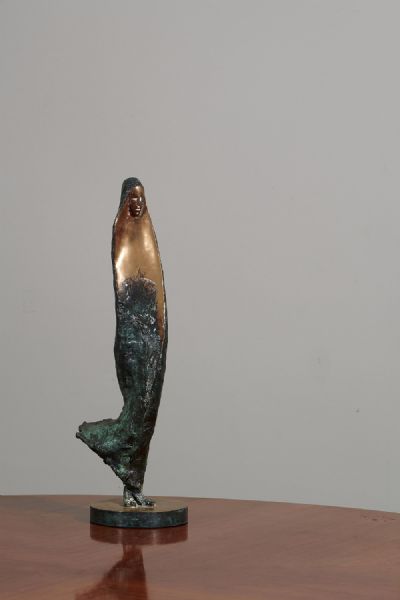Rowan Gillespie
Rowan Gillespie was born in Dublin but spent his early childhood in Cyprus. He studied at Kingstone College of Art London then York School of Art and finally Kunst og Handverke Skole in Oslo. He spent time in Norway before returning to Ireland in 1977 where he has settled with his wife in Dublin.
He is known to be Irelandís most commercially successful sculptor since focusing on site specific commissions and is best known for his sculpture commemorating the deaths of the Great Famine in the 1840s, now installed on North Dublin Quays. This sculpture prompted another major commission Migrants, unveiled in Toronto 2006.
Gillespieís distinctive style lies in his elongated figures, similar to the exaggerated figures in sixteenth century florentine Mannerism. Critics have discussed the pre-christian reference to elements of his sculpture such as in his Proclamation, as well as the influence of Henry Moore (1898-1986), Jean Arp (1886-1966), Barbara Hepworth (1903-1975), and of course Alberto Giacometti (1901-1966).
Gillespie built his own studio, workshop and foundry and thus has the advantage of being in a position to work alone from inception to completion of his work.
Since his first Dublin exhibition in 1976, Gillespie has met incredible commercial success.
Read More
He is known to be Irelandís most commercially successful sculptor since focusing on site specific commissions and is best known for his sculpture commemorating the deaths of the Great Famine in the 1840s, now installed on North Dublin Quays. This sculpture prompted another major commission Migrants, unveiled in Toronto 2006.
Gillespieís distinctive style lies in his elongated figures, similar to the exaggerated figures in sixteenth century florentine Mannerism. Critics have discussed the pre-christian reference to elements of his sculpture such as in his Proclamation, as well as the influence of Henry Moore (1898-1986), Jean Arp (1886-1966), Barbara Hepworth (1903-1975), and of course Alberto Giacometti (1901-1966).
Gillespie built his own studio, workshop and foundry and thus has the advantage of being in a position to work alone from inception to completion of his work.
Since his first Dublin exhibition in 1976, Gillespie has met incredible commercial success.
Read More


















